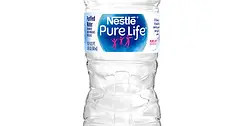top of page
Processed Water Bottled Tap Water
Many processed bottled water brands begin with municipal sources. These waters typically undergo advanced treatment to remove organic flavors, chlorine, and other residuals, creating a neutral foundation for controlled mineral addition.
The Water Sensory Institute assist brands in refining this process. Through mineral profiling and sensory analysis, we help brands move closer to the nuanced taste and mouthfeel of high-quality natural spring waters, widely regarded as the gold standard in bottled water.
The section below outlines key purification methods and how they influence the sensory qualities of bottled water.

Sources and Processes
Path
Pathwater
Source
Municipal water from Montebello, California

Processes
UV, reverse osmosis, ozone and calcium chloride, magnesium chloride, potassium bicarbonate addition
Core
Keurig Dr. Pepper
Source
Municipal tap water

Processes
Reverse osmosis with chemical addition of calcium chloride, magnesium chloride and potassium bicarbonate
Nestle Pure Life
Nestle
Source
Municipal water and some well water

Processes
Microfiltration and chemical addition for minerals
Essentia
Nestle
Source
Municipal water

Processes
Micro filtration and reverse osmosis with a chemical addition pH adjustment
LIFEWTR
Pepsi
Source
Municipal water

Processes
Reverse osmosis and chemical addition for pH adjustment and minerals
Smartwater
Coca-Cola
Source
Mostly municipal water

Processes
Vapor distilled and adding calcium chloride, magnesium
chloride and potassium bicarbonate
Aquafina
Pepsi
Source
40 municipal water across Canada and the US

Processes
UV, reverse osmosis and additional filtering steps
Dasani
Coca-Cola
Source
Municipal water in California, Minnesota, and Colorado

Processes
Reverse osmosis and chemical addition for minerals
bottom of page
